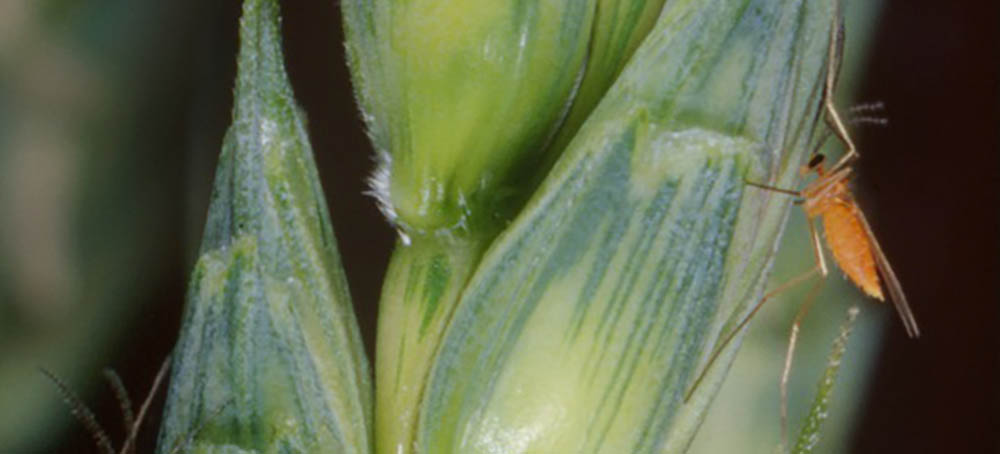 By Harry Brook
By Harry Brook
The provincial agriculture department recently released their survey for wheat midge in the province. Guess where they predict a hot spot for 2021? The north part of the county! They conduct this survey by taking soil core samples in the fall then sorting out all the wheat midge larvae in the soil. This is a pretty good indication of the prevalence of wheat midge in an area. After sorting through way-too-many soil samples, they generate a map of the numbers of larvae they found. They also inspect the larvae for any parasitism (which is a good thing). Next spring, the larvae hatch, move to the surface and pupate. Adults emerge in late June, early July, and adults start laying eggs in wheat flowers.
A wheat midge is a very small, delicate fly that hatches in the spring. Wheat midge lays eggs inside the wheat flowers in late June, early July, just as wheat heads emerge and flower. The eggs hatch and larvae feed on the developing wheat kernel. Their feeding can abort kernels and cause damaged, shrunken kernels, looking like frost or drought damage. Tolerance in wheat grading for damaged kernel is low, with #1CWR wheat being 2% or less, #2 – between 2% to 5% and #3 being 5% to 10%. Feed wheat has no maximum levels. It can get very expensive losing one or two grades due to midge damage.
Wheat midges are not good fliers and the actual time available for them to lay eggs in the wheat head is short. Female midge actively lay eggs when the temperature is above 15˚C and winds below 10 km/hr. Females are active usually after 8:30 p.m. You’re looking at a very narrow window where you can scout and effectively spray for these pests. It needs to be done in the evenings when the air is still or moving slowly and the wheat midge can be seen flying above the canopy. Daytime spraying can’t get chemical on the midge as they shelter at the bottom of the canopy. Once you see the yellow anthers protruding out from the wheat head, the wheat is no longer susceptible to midge damage. Any spraying at this time, is a waste of money.
Worse yet, if you spray late, at full flower or beyond, you run a great risk of spraying out the naturally occurring parasitic wasps that keep the midge numbers in check. This can make it worse in following years. When scouting, check several places in the field. Midge numbers may be highest along field edges, close to where wheat was grown the previous year. If high numbers are found throughout the field, the whole field may need to be sprayed. You need to scout various parts of the field. Adults look a bit like a small, orange mosquito.
Economic thresholds for midge affecting yield, is when there is one midge for every four or five wheat heads. For grade considerations where #1 wheat is common, a threshold of one midge per eight to 10 heads would warrant spraying but only before full wheat flowering and in the calm evening.
Early seeding of wheat may reduce the problem of wheat midge but a lot depends on the individual variety. If greater yield is linked to longer periods of head emergence, it can still be a big problem. Another useful tool is seeding a midge-tolerant wheat variety. However, it must be used carefully to avoid resistance showing up.
Flagstaff County is the predicted location for an outbreak of wheat midge this year. Careful crop planning and scouting can prevent severe losses to your wheat operation. Forewarned is forearmed. The videos below have more information on wheat midge and control.
Harry Brook is Flagstaff County’s Agricultural Fieldman. He can be reached via email at: hbrook@flagstaff.ab.ca or by phone at: 780-384-4138.